Research lines
Active Polymer Optical Fibers
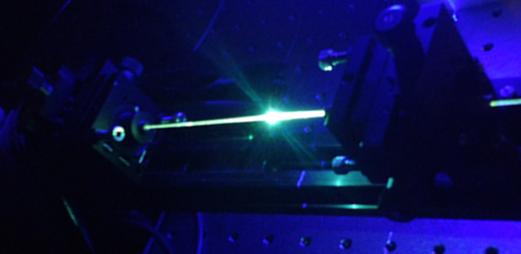
Currently, we investigate on polymer optical fibers (POFs) doped with organic dyes to make efficient fiber lasers and amplifiers thanks to the high gains achievable with them in short distances. We characterize, both computationally and experimentally, the peculiarities of light amplification in both step-index and graded-index POFs. Our results serve to optimize the pumping schemes (both with one and with two photon absorption, and with pulses of different widths) and to better understand the emission characteristics as functions of parameters such as the fiber length, the fiber numerical aperture and the radial distribution of the dopant.
Optical Fibre Sensors
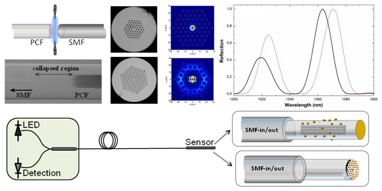
The aim of this research line is to develop novel, highly flexible, generic optical sensing platforms based on conventional and photonic-crystal fibres made of glass or polymer. We incorporate tailored nanoscale materials on the sensitive region of the waveguide or on the optical fibre facet. In this manner we develop highly-sensitive and comprehensive optical sensors that have the capability to monitor, locally or remotely, multiple parameters or to compensate their concurrent sensitivity to noises and environmental disturbances. Our ambition is to develop devices that outperform state-of-the-art optical sensors both in sensitivity and functionality. An important advantage of our sensors is the fact that they operate at well-established telecommunications wavelengths and their interrogation can be carried out with battery-operated LEDs and inexpensive handheld spectrometers.
Bio-sensing using SERS
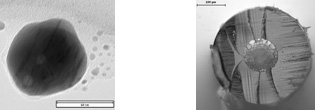
The research line on bio-sensing is based on Surface Enhanced Raman Spectroscopy (SERS) applied to liquid-filled hollow-core microstructured polymer optical fibers (HC-mPOFs). The solution injected to the HC-mPOF contains a mixture of the analyte (molecule of interest) and suitable SERS materials (metallic colloids of silver or gold). HC-mPOFs offer very long interaction lengths of the optical probe field with the analyte, and because the light is tightly confined, the interaction with the sample is increased and the signal collected with high efficiency. We study different configurations of the sample preparation injected to the HC-mPOF with the aim of increase the Raman intensity and improve the sensitivity and reproducibility of this sensing technique. For such a purpose we will use an inVia SEM/Raman microscope.
Multicore Polymer Optical Fibers
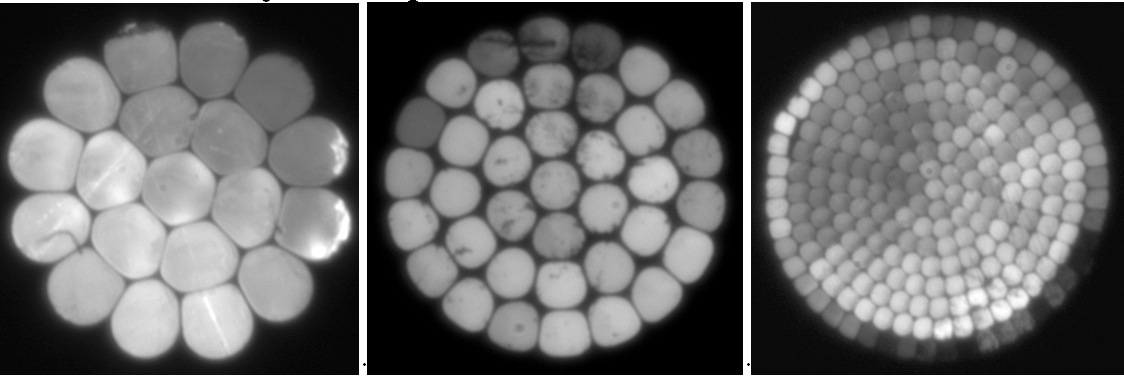
Currently, we investigate on multicore polymer optical fibers (MPOFs) because they constitute a good alternative to conventional fibers due to their smaller sensitivity to bending losses and their large size. These fibers are composed of small cores embedded in a cladding material. We characterize, both computationally and experimentally, different MCPOFs to study the influence of their characteristics on coupling losses due to misalignments or crosstalk, for example. Our results serve to better understand the behavior of these fibers.
Turbine-blade tip clearance and tip timing sensor
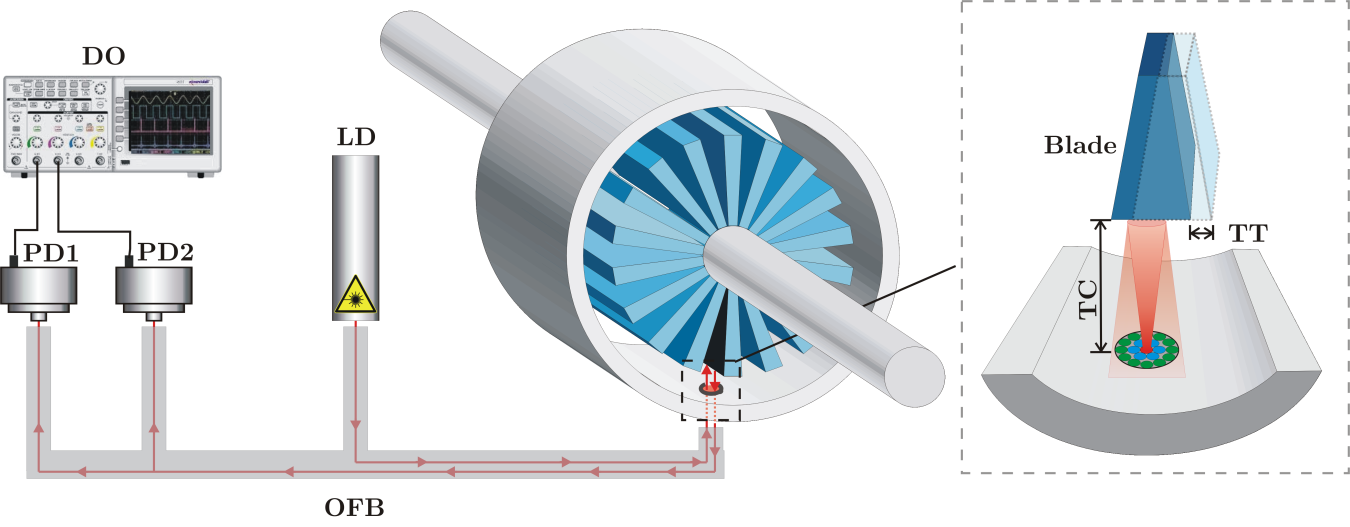
Blade tip timing and tip clearance are two critical parameters for turbine engineering, since its measurement and optimization lead to more effective, secure and reliable engines. The sensor is based on a trifurcated bundle of optical fibers that is mounted on turbine casing. This bundle configuration eliminates the influence of intensity variations of the light source and also the influence of blade surface reflectivity. It is composed of a central illuminating fiber and two concentric rings of receiving fibers that collect the light reflected from the blade. A laser is used to insert light into the illuminating fiber, which is then transmitted to the blade. Two photodetectors turn the reflected light signal from the receiving rings into voltage. The electrical signals are acquired and saved by a high-sample-rate oscilloscope.
POF Modeling
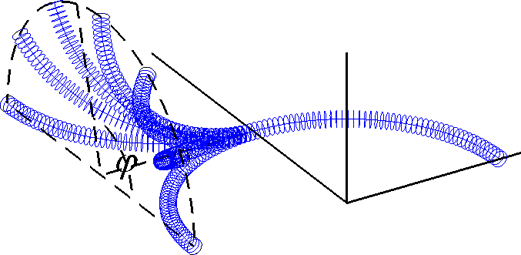
We have developed simulation software to analyze the behaviour of both passive and active POFs. For passive POFs, we employ the ray-tracing method in combination with Fresnel's reflection and transmission coefficients. The geometries that can be considered are diverse, including 3-D ones. For active POFs, we solve the rate equations numerically using an ad-hoc semidiscrete finite-difference scheme. In both cases, the models employed are valid for step-index POFs and for graded-index ones. Moreover, we have also simulated multi-core POFs, and we have carried out analyses of misalignments and of bandwidths when using them.
Low-Cost Optical Current Sensor
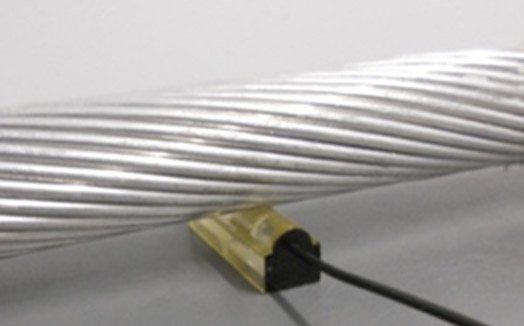
We have designed and developed a low-cost optical current sensor based on Faraday rotation for the Smart Grid Company of the Arteche Group. Currently, we are testing the influence of temperature variations on the performance of the sensor.
Nuclear Waste Drum Monitoring Sensor
A sensor for monitoring nuclear waste drums and detecting possible leaks using plastic scintillating fibers is been developed by the APG. This prototype can be the first step to a more advanced nuclear waste monitoring system.

